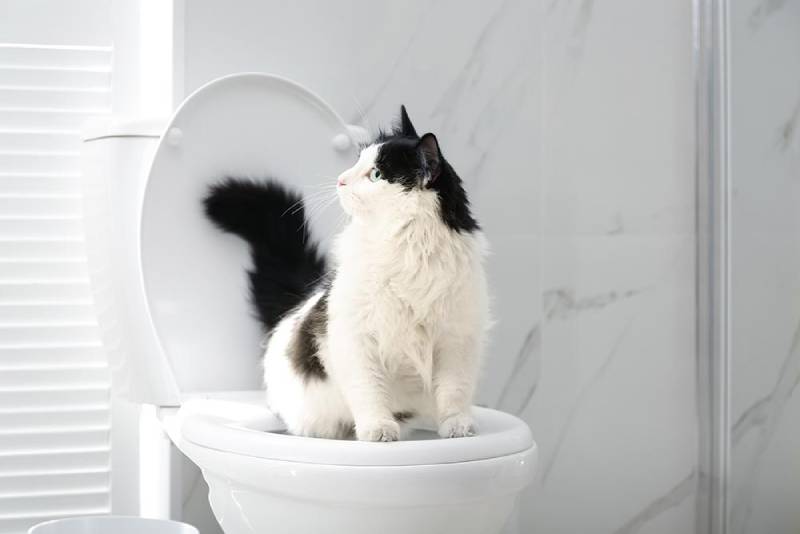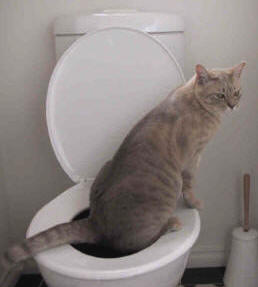Dangers of Disposing Cat Poop in Your Toilet - Precautionary Measures
Dangers of Disposing Cat Poop in Your Toilet - Precautionary Measures
Blog Article
We have unearthed this post relating to How to Dispose of Cat Poop and Litter Without Plastic Bags listed below on the net and thought it made perfect sense to relate it with you on this page.

Intro
As cat proprietors, it's vital to be mindful of how we deal with our feline friends' waste. While it might seem convenient to flush cat poop down the toilet, this practice can have damaging effects for both the setting and human wellness.
Ecological Impact
Purging pet cat poop presents unsafe virus and bloodsuckers right into the water system, presenting a considerable danger to aquatic communities. These contaminants can adversely affect marine life and concession water high quality.
Health and wellness Risks
In addition to environmental concerns, purging feline waste can also present health threats to people. Pet cat feces may consist of Toxoplasma gondii, a bloodsucker that can cause toxoplasmosis-- a potentially extreme illness, particularly for expecting females and people with weakened immune systems.
Alternatives to Flushing
Luckily, there are more secure and extra responsible ways to take care of feline poop. Think about the following choices:
1. Scoop and Dispose in Trash
The most usual technique of dealing with pet cat poop is to scoop it right into an eco-friendly bag and throw it in the garbage. Make certain to utilize a specialized litter scoop and deal with the waste quickly.
2. Use Biodegradable Litter
Opt for naturally degradable feline clutter made from materials such as corn or wheat. These litters are environmentally friendly and can be safely gotten rid of in the trash.
3. Bury in the Yard
If you have a yard, take into consideration burying pet cat waste in a designated area away from veggie yards and water resources. Be sure to dig deep enough to prevent contamination of groundwater.
4. Install a Pet Waste Disposal System
Purchase a family pet garbage disposal system particularly created for feline waste. These systems utilize enzymes to break down the waste, reducing smell and ecological influence.
Verdict
Responsible pet dog possession prolongs beyond offering food and shelter-- it additionally entails correct waste administration. By refraining from flushing pet cat poop down the toilet and choosing alternate disposal methods, we can decrease our environmental footprint and shield human health and wellness.
Why Can’t I Flush Cat Poop?
It Spreads a Parasite
Cats are frequently infected with a parasite called toxoplasma gondii. The parasite causes an infection called toxoplasmosis. It is usually harmless to cats. The parasite only uses cat poop as a host for its eggs. Otherwise, the cat’s immune system usually keeps the infection at low enough levels to maintain its own health. But it does not stop the develop of eggs. These eggs are tiny and surprisingly tough. They may survive for a year before they begin to grow. But that’s the problem.
Our wastewater system is not designed to deal with toxoplasmosis eggs. Instead, most eggs will flush from your toilet into sewers and wastewater management plants. After the sewage is treated for many other harmful things in it, it is typically released into local rivers, lakes, or oceans. Here, the toxoplasmosis eggs can find new hosts, including starfish, crabs, otters, and many other wildlife. For many, this is a significant risk to their health. Toxoplasmosis can also end up infecting water sources that are important for agriculture, which means our deer, pigs, and sheep can get infected too.
Is There Risk to Humans?
There can be a risk to human life from flushing cat poop down the toilet. If you do so, the parasites from your cat’s poop can end up in shellfish, game animals, or livestock. If this meat is then served raw or undercooked, the people who eat it can get sick.
In fact, according to the CDC, 40 million people in the United States are infected with toxoplasma gondii. They get it from exposure to infected seafood, or from some kind of cat poop contamination, like drinking from a stream that is contaminated or touching anything that has come into contact with cat poop. That includes just cleaning a cat litter box.
Most people who get infected with these parasites will not develop any symptoms. However, for pregnant women or for those with compromised immune systems, the parasite can cause severe health problems.
How to Handle Cat Poop
The best way to handle cat poop is actually to clean the box more often. The eggs that the parasite sheds will not become active until one to five days after the cat poops. That means that if you clean daily, you’re much less likely to come into direct contact with infectious eggs.
That said, always dispose of cat poop in the garbage and not down the toilet. Wash your hands before and after you clean the litter box, and bring the bag of poop right outside to your garbage bins.
https://trenchlesssolutionsusa.com/why-cant-i-flush-cat-poop/

Hopefully you enjoyed reading our part on Can You Flush Cat Poop Down The Toilet?. Thanks a lot for taking the time to read our article post. Are you aware of another individual who is truly interested in the niche? Why not share it. We love reading our article about How to Dispose of Cat Poop and Litter Without Plastic Bags.
Call Today Report this page